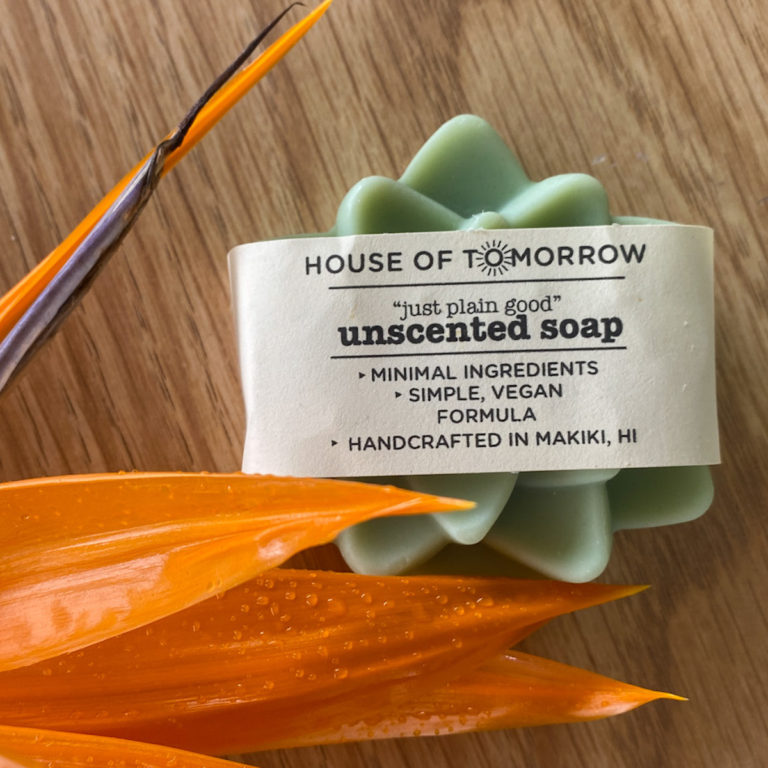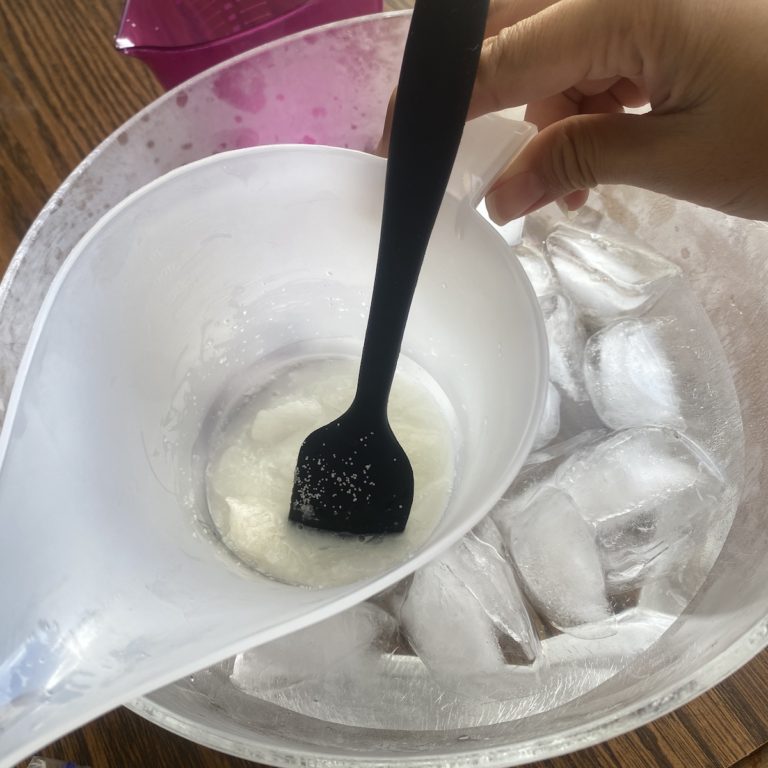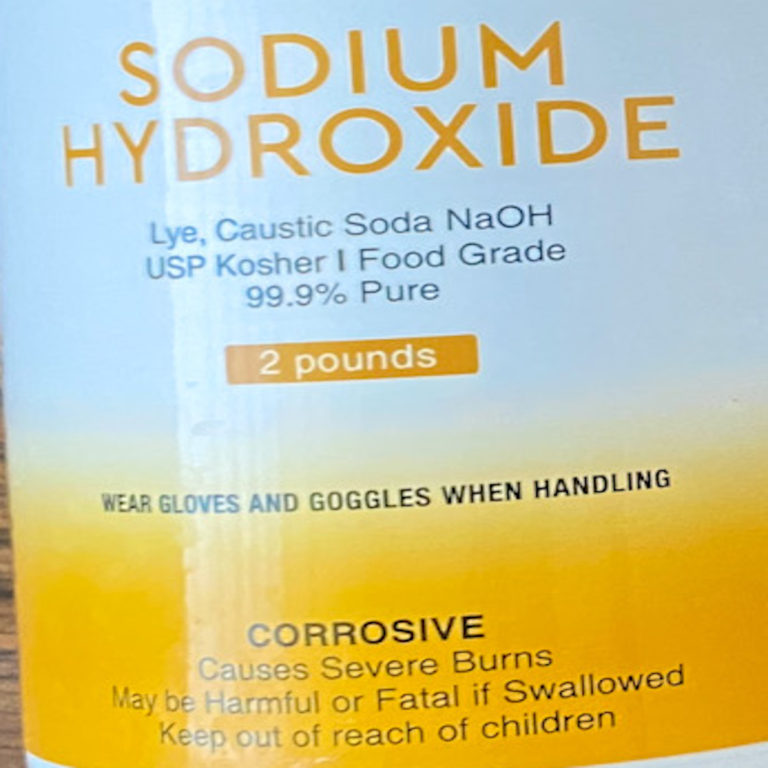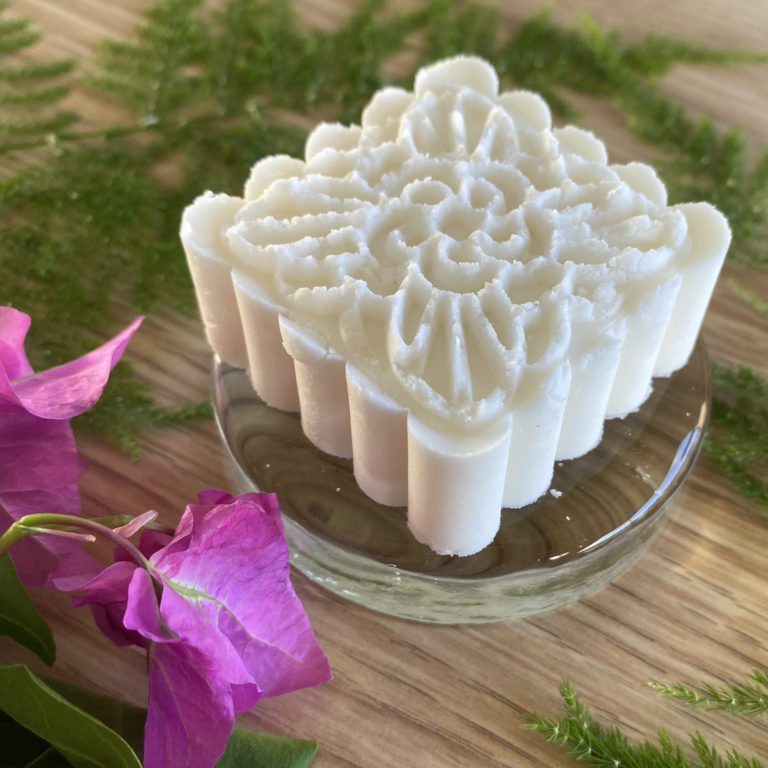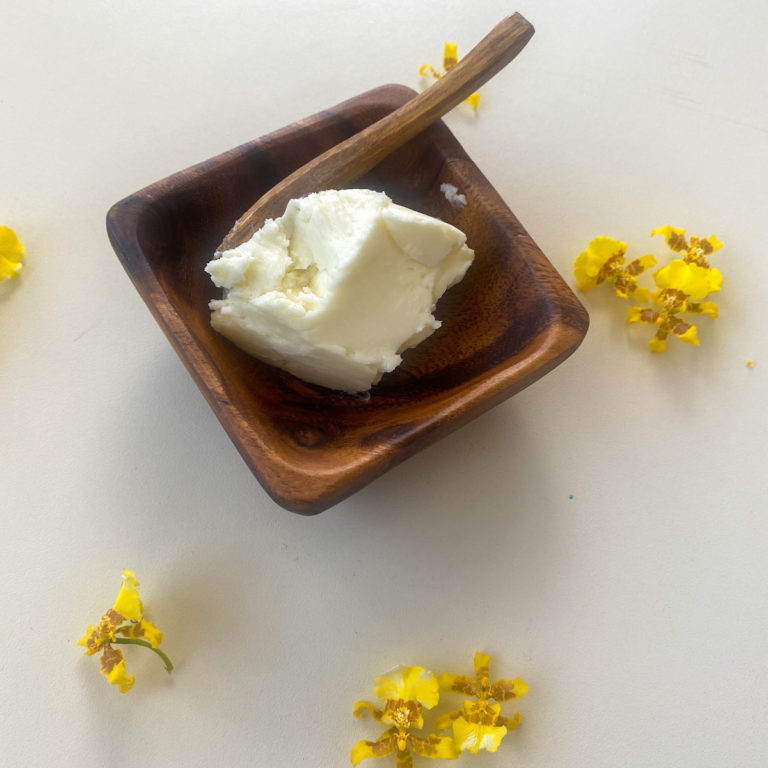How To Make Soap at Home Using Natural Ingredients
Many people are switching to natural self-care products because of the potential negative impact of some ingredients in commercial soap. Making natural soap gives you control over what you put on your skin. But how do you make it?
To make soap at home using natural ingredients, choose organic, responsibly sourced raw material from plants, fruits, and minerals. Use plant-based fats. Instead of perfumed oils for fragrance, use essential oils. Instead of coloring soaps with dyes, use herbs and spices.
Handcrafting organic soap is a fab way to introduce plant and mineral-based therapeutic benefits to your skin. Make some yourself using the techniques in this article. Have a whirl at these exquisite recipes and add your personal touch to make your soaps unique.
What Is Soap?
Soap is the result of mixing animal fat or plant oil with lye (aka sodium hydroxide, NaOH, caustic soda). When soap interacts with water, it breaks apart dirt from surfaces. We use soap to clean ourselves and to smell good, but in ancient times, soap was also used to color hair, treat wounds, and act as an ointment.
What Is “Natural” Soap?

Unlike the traditional or commercial kind sold in supermarkets, all-natural soap is made with organic bases and ingredients. It doesn’t contain lye, synthetic material, and potentially harmful additives that irritate sensitive skin, like sodium lauryl (and laureth) sulfate, parabens, or triclosan.
For soap artisan, Tanya Anderson, who wrote the Lovely Greens Guide to Natural Soapmaking, creating soap naturally means not using questionable methods or toxic ingredients. The latter include artificial additives, perfumes, or dyes. Anderson doesn’t package her soaps, uses plant-based substances to color her soaps, and doesn’t use palm oil. (She claims it negatively impacts the environment.)
Katie Carson, the proprietor of Royalty Soaps, explains that “natural soap” is not a regulated term, so anybody can say their soaps are “natural,” no matter what they contain. She has her definition of natural soap—one that doesn’t contain anything synthetic. “You can find everything in the soap naturally occurring in nature or extracted from something naturally occurring in nature, like essential oils from coconuts and olives.”
The goal of creating all-natural soaps is to make a product entirely safe for people, animals, and the environment. A natural soap maker does not use dyes, fragrance oils, glitter, plastic embeds, synthetic preservatives, plastic packaging, and suchlike.
How To Customize Soap Naturally
According to craftsperson and soap maker Didiayer Snyder, the easy way to customize soaps naturally is to choose organic bases and then add your preferred non-toxic ingredients to them. Use only the highest quality oils, fruits, herbs, flowers, and organic soap bases. Leave the creation of safe, natural soap bases to the experts, she says. Focus on scent and design instead.
There is a vast array of all-natural soap bases on the market. Examples are those made with these as the primary ingredients: aloe vera, glycerin, vitamin E, cocoa butter, shea butter, coconut oil, avocado oil, olive oil, sweet almond oil, and castor oil. Our Earth’s Secret is one of the many online retailers that sell organic soap bases, like those made with goat’s milk.
How To Color Soap the Natural Way
Just because you’re avoiding commercially produced ingredients doesn’t mean your handcrafted soap has to be blah. Color soap naturally with plant-based essences, natural food coloring, fruits, or powdered herbs and spices.
For example, use citrus powders to color soap and tangerine rinds to add fragrance to it. Instead of dyes, sprinkle crushed rose petals into your soap mixture for natural color and an interesting texture. The petals double as decorative elements.
Natural Additives
- Dried herbs or flowers—Examples are lavender, lemongrass, rose petals, oakmoss, spinach, or chamomile.
- Essential oils—These are extracted from the flowers, stems, seeds, or roots of plants. Use 15 to 20 drops for each batch of soap. Not sure what scent to use? Get a therapeutic-grade kit like Artizen’s Top 14 Essential Oil Set.
- Powdered spices and herbs—Use these to color soaps naturally. Examples are turmeric, cinnamon, chlorophyll, beetroot, and cocoa.
- Food coloring—Some soap artisans use this to color soaps, but most don’t recommend it because it usually doesn’t turn up as expected.
- Other essences—Use these to add extra benefits to soaps, such as exfoliation, moisture, texture, and design. Examples are mineral salts, cornmeal, oatmeal, aloe vera gel, powdered milk, coffee, and clay.
Soap Making Processes
Regardless of the method, make soap all-natural by choosing non-toxic ingredients. These are the processes used to make soap:
- Cold process—Mix oil and lye, pour the resulting liquid into insulated molds, then wait for it to set.
- Hot process—Use heat to melt and cook the ingredients and to speed up the saponification process (when oil and lye transform into soap). Use a slow-cooker to accomplish this or double boil mixtures on a stove.
- Melt-and-pour—Use a readymade soap base to which you add your preferred ingredients.
- Rebatching—This method recycles completed handcrafted soap that didn’t turn out as expected to avoid waste and save used ingredients. This method, however, doesn’t produce soap as pretty as fresh batches. It’s also time-consuming and labor-intensive.
Waiting Time
The cold process needs more wait times compared to the hot process. In general, soapers let the soap cool down to room temperature and set for 24 to 48 hours before unmolding it (removing hardened soap from the insulated molds). This ensures complete saponification, and the soap is safe to use.
How To Make Soap “Without Lye”
Organic soap makers dislike handling lye because it’s harmful to the skin, eyes, and lungs in its pure form as a corrosive chemical. They avoid dealing with it by using the melt-and-pour method, wherein they use a readymade soap base. This leaves room for creativity. Just melt the base, pour it into molds, then add fragrance, color, and texture. After the mixture hardens, your soap is ready.
Note that melt-and-pour soap bases are made with lye, though it has already been pre-saponified (“evaporated” by the time the mixture turned into soap). So although melt-and-pour soap is not totally lye-free, somebody already handled the lye on your behalf. This is why we put quotes around “without lye.”
Here are the materials you will need:
- soap base
- glass bowl
- silicone mold
- essential oil(s)
Follow these steps:
- Measure one pound of your preferred soap base. Cut it into chunks.
- Put these in a bowl and melt in the microwave. Or heat in a pot on the stove.
- Add some drops of essential oil to the melted soap base. Mix well.
- Pour the mixture into the mold. Let it cool for several hours or until the soap hardens.
- Take the soap out of the mold, then cut into bars.
All-Natural Soap Recipes
Rose Hip Soap
Ingredients:
- soap base
- rose petals and essential oil
- red colorant*
*For all-natural soap, use these botanicals and minerals as alternatives to dyes:
- red sandalwood powder—renders a purple-red color
- madder root—produces a range of pinks, from magenta to red
- Moroccan red clay—mimics an orange-red or brick red color
Procedure:
- Cut up the soap base into small blocks. The amount depends on the size of your mold. Put the blocks in a pot.
- Melt the soap blocks by placing them on medium heat for about three minutes.
- Add two drops of red colorant (or sprinkle some powdered spice/herb) and five drops of rose essential oil to the melted soap base. Mix. Pour into a mold.
- Sprinkle some rose petals and tiny buds into the mixture.
- Leave the mixture to harden for 20 minutes. Opt to accelerate the cooling process by putting the mold in the fridge.
- Once the soap hardens, pull on the edge of the mold to help release the soap. Turn the container over and pop-out your soap. Cut it up into bars of your preferred size.
For these other recipes, we’ve simply described them or included basic instructions but provided the links to their creators’ tutorials. Visit their sites for specifics on making the recipes.
Goat’s Milk Soap With Citrus
With some customization, you can turn this melt-and-pour recipe from Hello, Wonderful into your version of artisan soap. The premade soap base means you don’t have to handle lye. The dried citrus slices may not be fresh, but they certainly smell like they are.
Procedure:
- Melt the goat’s milk soap base.
- Pour citrus essential oil into the melted base. Mix well. Pour the mixture into a mold.
- Add dried orange slices. These are heavy, so add them after the soap has cooled a bit to prevent them from falling to the bottom.
- Wait until everything has set, then pop the soap out of the mold.
Lemongrass and Green Tea Soap
You can create this recipe from The Spruce Crafts from items you may already have in your kitchen. Use either green tea leaves or a readymade tea bag steeped in water, or the powdered kind. Add lemongrass oil (or substitute it with eucalyptus) for fragrance. All these ingredients have skin-healing properties.
Milk and Honey Soap
Honey not only has antiseptic qualities, but it also invigorates a lackluster complexion. Use honeycomb mold to make your soap more visually pleasing.
This simple soap recipe from Happiness is Homemade takes only 10 minutes to make and needs only four ingredients:
- goat’s milk melt-and-pour soap base
- raw honey
- colorant
- fragrance
Coffee Soap
This recipe from Tifforelie yields coffee-scented soap. For a coffee-infused gourmet soap, add ground nuts and coffee beans to a honey-milk soap base. Coffee grounds provide excellent exfoliating—the honey and milk balance out the coffee smell.
Key Lime and Sugar Scrub Soap
This easy recipe from A Cultivated Nest uses sugar and shredded regular soap for texture and exfoliation. Substitute the latter with the organic kind if you want to stay all-natural. Add lime colorant for vibrance and essential oil for fragrance. The sugar scrub cubes last for half a year.
Organic Ingredients for Making All-Natural Soap
- Activated charcoal—This mineral absorbs toxins from the skin by acting like a vacuum that sucks out deep-seated gunk. Use it to create a marbled design on soaps.
- Beetroot—Beets are rich in vitamin C, potassium, folate, and antioxidants, offering numerous benefits for the skin. Just a hint of color from their powder imbibes a rich hue.
- Calendula—Its flowers color soap and infuse fragrance. Calendula color doesn’t fade. Pronounce Skincare sells organic calendula.
- Chamomile—Most popular as an ingredient in tea used for calming nerves and promoting sleep, chamomile is also excellent for soothing dry, itchy skin because of its anti-inflammatory properties.
- Citrus rinds—Fruits like grapefruit, orange, lemon, or lime infuse fragrance, color, and exfoliation to soaps. They fight free radicals with their high antioxidant and vitamin A, B, and C content.
- Cocoa—Cocoa is rich in flavonoids, powerful antioxidants that fight free radicals and preserve youthful skin. Soap makers typically use it in powder form.
- Coconut—In shredded form, it blends well with citrus strips. As a carrier oil, coconut is packed with humectants.
- Coffee—Its antioxidants have anti-aging and detoxifying properties. Coffee is a natural astringent for tightening and firming skin. Use coffee grounds for exfoliation, fragrance, and color.
- Essential oils—They not only infuse fragrance to soaps naturally, but they also offer many skin-healing benefits.
- Honey—Soap makers use it to increase lather production, but it’s also an organic source of vitamins, nutrients, enzymes, and acids that boost skin health.
- Lavender—Valued worldwide as a sleep aid, the lavender plant’s flowers, and buds also add fragrance, color, and design to soaps.
- Loofah—When encased in soap, it rids the skin of dead cells, leaving room for moisturizers to work their nourishing and soothing magic on the skin.
- Loose-leaf tea—Use it for decoration and exfoliation.
- Matcha—This powder from green tea is rich in antioxidants, which give it anti-inflammatory and anti-aging properties. It smoothes, hydrates, tightens and brightens skin. In loose-leaf tea form, it adds exfoliation to soaps.
- Oatmeal—Use rolled oats, colloidal oatmeal, and quinoa to soften skin and to decorate soaps. Their cellulose and fiber content soothes irritated, itchy skin.
- Pink Himalayan salt—Invigorates skin by sloughing off dead skin cells. Its mineral salt and electrolyte content breaks down lactic acid build-up, relieving muscle pain. Artisans also use it to harden the soap.
- Rose—The flower soothes, softens, brightens, and tightens skin. Use its petals for fragrance and decoration.
- Rosemary—Combine its sprigs with lemon, peppermint, or lavender for fragrance. Its antiseptic content makes it a popular addition to antibacterial soaps.
- Seeds—Apricot, chia, and poppy seeds offer attractive ways to decorate soaps and add exfoliation.
- Vitamin E oil—Its antioxidants shield cells from damage related to free radicals. Its emollients moisturize both skin and hair.
Essential Oils for Making All-Natural Soap
According to Green Matters, you can add any kind of essential oil to an all-natural soap recipe. Add 30 drops of oil for every pound of soap base. If you want to mix several essential oil types, adjust this measurement accordingly. For example, if you’re making tangerine pineapple soap, use one pound of soap base, 15 drops of tangerine oil, and 15 drops of pineapple oil.
To use essential oils in your handcrafted soap, calculate the usage rate on Eocalc, which has an extensive database of oil blends. Its essential oil calculator aims to educate people on safe essential oil use and help creators formulate new natural fragrances through blending.
To determine how much oil to use, try Eocalc’s blend rate calculator. The International Fragrance Association (IFRA) based safe oil usage rates on their standards and the scientific data they published. To choose oils appropriate for your soaps, visit the essential oil blend library for blends from the soap making community. You can also submit your blend(s) to Eocalc for inclusion in the library.
IFRA will be holding its virtual Global Fragrance Summit from March 2 to 4. If you want to know the proper way to add fragrance to your soaps, it’s a good idea to attend it. Visit their website for registration details.
Infusing Oils and Herbs to Natural Soap
Ann Kamenicky, the owner of White Dormouse Handcrafted Artisan Soaps, demonstrates how to infuse carrier oils and herbs into the soap in this video:
Learning about oil and herb infusion is a massive step into making your soap unique and wonderful-smelling, with medicinal benefits to the skin. We give you a glimpse into her oil and herb collection.
Base Oils
These are the carrier oils, their healing benefits, and shelf life:
- Avocado—This oil is typically used in balms, creams, masks, and lotions. It is anti-aging; it relieves itchy skin, replenishes skin damage, and speeds up healing. Its complementary herbs are valerian root and ginger root. It is not advisable for those with fruit allergies. Its shelf life is two years.
- Flaxseed—Oil from this seed is low in acid but rich in Omega 3 and fatty acids. It softens skin and reduces swelling. Both rice bran oil and flaxseeds calm, hydrate, renew, and prevent skin from aging but don’t clog pores. Use them on both body and hair. Flaxseed shelf life is one to two years.
- Grapeseed—This light oil has antioxidants and is an excellent massage blend but shouldn’t be used by people with grape allergies. It rejuvenates tired skin, repairs sun damage, and relieves muscle and joint pain. Its complementary herbs are St John’s wort, peppermint leaf, comfrey leaf, and yarrow leaf. Its shelf life is one to two years.
- Marshmallow root—This oil relieves swelling, burns, and muscle pain. It treats chapped lips, infections, and insect bites. Use it for hair, too. Infuse it with peach kernel refined oil and olive oil. Its shelf life is two to three years.
- Olive—This light, non-greasy oil with a distinct scent is more popularly used for cooking. It offers many medicinal and skin-healing benefits. Its shelf life is one to two years.
- Rice bran—This oil is thick and foggy but moisturizing, thanks to its high vitamin E and antioxidant content. Mix it with these herbs for infusion: daisies, yarrow leaf, and flaxseeds. This oil lasts six months to one year.
- Safflower—This oil is rich in vitamin E and omega 6. Blend it with olive oil and sweet almond oil. Its healing qualities include improving skin function, providing relief from eczema and oily skin, hydration, and wrinkle prevention. Its complementary herbs are blue mallow herb, comfrey leaf, and plantain. Its shelf life is two years.
- Sunflower—Its oil provides moderate absorption, so it’s perfect as a massage medium. It treats infections and skin irritation and rids the skin of germs and toxins. Its complementary herbs are calendula, plantain, and goldenrod. Its shelf life is one year.
- Sweet almond—This is a superior light massage oil with antioxidants, a nutty fragrance, and moisturizing and anti-aging properties. It relieves inflammation, soothes ailing skin, regenerates skin cells, and repairs sun damage. It controls acne, dark circles, sunspots, and stubborn scars. Its complementary herb is licorice root. Its shelf life is one to two years.
Herbs
Many herbs are available on the market, such as comfrey leaf, marshmallow root, calendula, and lemon balm. Their healing properties vary, from nourishing dry skin and hair to clearing acne to control wrinkles to reducing swelling. Some herbs are tiny seeds, while others are chunky and floral, which means you may need more or less in an infusion.
Cold infusion
Also known as solar infusion, Kamenicky recommends dried herbs, although fresh ones can also be used (but with adequate preparation to prevent rancidity).
Steps:
- Combine herbs and oil in a jar. The herb-to-oil ratio depends on the herb type. For example, for a flaxseed infusion, mix one ounce of flaxseeds to approximately 13 ounces of rice bran oil. The standard is about half a cup to ⅔ cup of herbs for a basic mason jar.
- When adding the base oil, turn the flaxseeds (or whatever herbs you’re using) when the oil reaches halfway up the jar. Add more base oil until it almost reaches the top, leaving enough room for turning the herbs. Failing to fill the jar to the brim can cause the herbs to rise to the top. In which case, you’ll need to either add more oil or risk the emergence of mold and have to discard the entire infusion.
- Cover the jar with its lid. Wrap a string of cheesecloth around the jar’s neck with a small label attached, outlining the jar’s contents for reference. Let the jar sit on a windowsill exposed to warm but indirect sunlight for four to six weeks or more.
- Meanwhile, gently turn the jar daily to combine the herbs and release their qualities into the oil.
Heat infusion
This method uses heat to save energy and speed up the infusion.
Steps:
- Heat the oil-herb mixture using a double boiler, crockpot, or other heating appliance. If using a crockpot, place a shallow amount of water approximately a quarter of a way up to its interior. Set the heat to low.
- Place a mason jar containing seeds, herbs, and oil in the water.
- Heat the mixture for about an hour or until the water reaches a temperature not exceeding 125°F (52°C). Do this without the jar and crock pot lids to prevent condensation from dripping into the oil and to ensure the infusion retains a substantial potency of its medicinal qualities. Stir the mixture to keep the heat circulating throughout the container.
- When the liquid cools off, pour it into a new jar and tightly seal it.
Culinary
This method is for cooking or making salad dressings. Use either cold or hot infusion with your preferred oil, such as almond, macadamia, sunflower, or extra virgin olive oil. Add herbs and veggies, like garlic, ginger, peppers, and pearl onions.
Steps:
- Strain the oil by pouring it into a ziplock bag. Snip a bit off the bag’s edge.
- Squeeze the oil into a strainer placed over a bowl.
- Pour the filtered oil into a jar and cover it.
- Keep the solid leftovers for future cooking or adding to salads.
How To Preserve Soap Naturally
Some artisans use antioxidants to protect the free-floating oils in soaps from rancidity. The typical antioxidants used in soaps are extracts of grapefruit seed, rosemary oleoresin, and vitamin E, each with its advantages and disadvantages.
Other soap makers don’t think antioxidants are necessary because they claim these are not real preservatives. Also, they feel that finished soaps don’t need preservatives because they don’t contain any water nor promote an environment where germs can thrive.
If you prefer to use antioxidants, add these quickly to your soap mixture before it hardens. Use a whisk to blend in additional ingredients but take care not to beat the soap mixture or push air into it to prevent air bubbles from forming.
Resources
Books and Guides
- The Everything Soapmaking Book by Alicia Grosso
- Jessica Martin: A Complete Guide to Organic Homemade Soap Making
- Susan Miller Cavitch: The Natural Soap Book: Making Herbal and Vegetable-Based Soaps
Tutorials
- At Home With Didiayer: How to Make Natural Melt and Pour Soaps:
Where To Buy Materials
- hobby or craft stores
- Liberty Natural
- Bulk Apothecary
- Nature’s Garden Wholesale
- Bramble Berry
- Wholesale Supplies Plus
- Nurture Soap
Conclusion
Today’s consumers are increasingly drawn towards handcrafted organic soaps and away from commercially produced brands. The trend is a result of newfound awareness of the therapeutic benefits of all-natural ingredients. Hobbyists, entrepreneurs, novice soap makers, and professional artisans have already taken their cue from this development.
If you want to join them and plan to go all-out organic, this is the perfect time to do so. You may even profit from it. We hope this article will help you with your foray into all-natural soap making.

